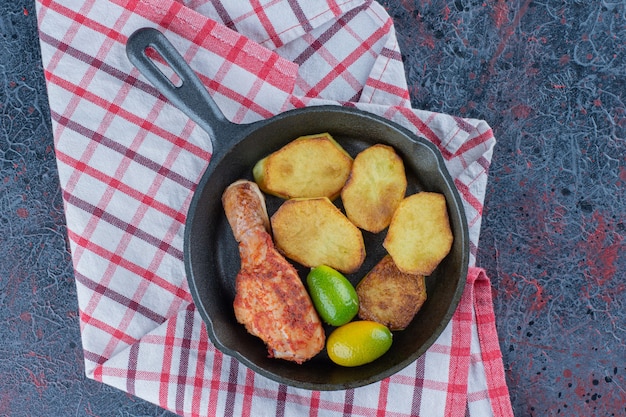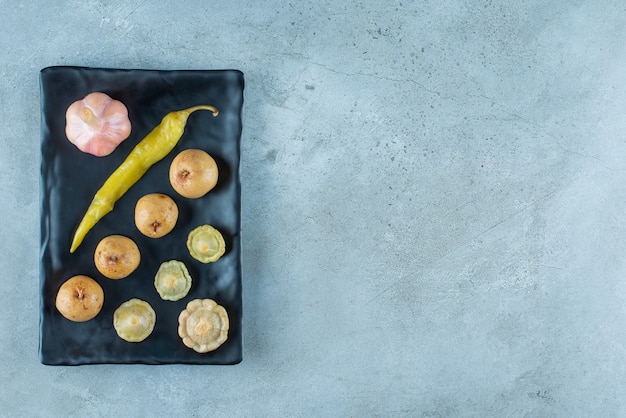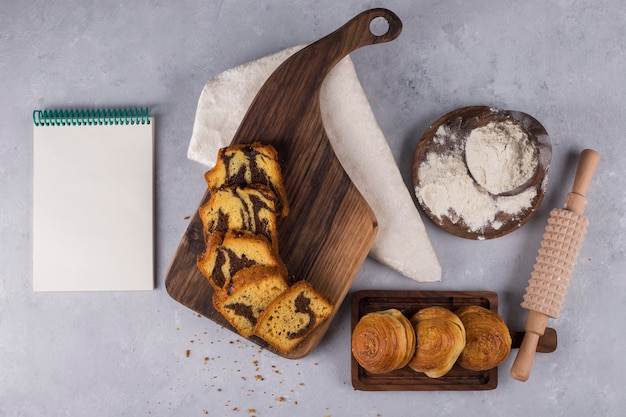Potatoes. They're a staple in kitchens worldwide, and for good reason. They're versatile, affordable, and absolutely delicious. Whether you're a seasoned chef or a kitchen newbie, there's always something new to discover about these humble spuds. So grab your apron, get comfy, and let's embark on a journey together, exploring everything from crafting perfect fries to whipping up a dreamy mash.
(Part 1) The Basics of Choosing Your Potatoes

choosing the right potato is the first step to success. You wouldn't use a floury potato for a salad, would you? There's a whole potato world out there, each variety boasting unique texture and flavor.
flour potatoes
These beauties are your go-to for mashing, roasting, and baking. Their high starch content gives them that fluffy, airy texture that melts in your mouth. The maris piper is a classic for a reason - it's my personal favorite for mash. Flour potatoes also excel at becoming roasties, holding their shape beautifully and getting gloriously crispy on the outside.
waxy potatoes
Waxy potatoes are the opposite of their floury cousins. They're low in starch, giving them a firm texture that holds up perfectly in salads, boiling, and potato cakes. You'll often find these used for salad potatoes, like the Charlotte, because they keep their shape, meaning they won't disintegrate into a mushy mess.
all-purpose potatoes
Potatoes like the king edward are the chameleons of the spud world. They're versatile enough to handle boiling, roasting, and even frying, making them a great choice if you're not sure what you want to make.
(Part 2) Boiling Your Potatoes

boiling potatoes is a simple technique, but there are a few tricks to get them just right. Here's my tried-and-tested method:
1. The Prep
First things first, give your potatoes a good scrub. No need to peel them unless the recipe calls for it. Then, chop them into even-sized pieces. This helps them cook evenly, ensuring you don't end up with some bits overcooked and others still raw. Whether you're going for chunks, cubes, or slices, make sure they're all roughly the same size.
2. The Boil
Fill a large saucepan with cold water and add a generous pinch of salt. Bring it to a rolling boil, then carefully add the potatoes. It's crucial to add them to boiling water, otherwise, the outside will cook too quickly, leaving a mushy exterior and an undercooked center.
3. The Timing
The cooking time depends on the size and type of potatoes you're using. A good way to check if they're cooked is to insert a sharp knife into the centre. If it slides in easily, they're done. For waxy potatoes, aim for about 15 minutes. Floury potatoes will take a bit longer, around 20-25 minutes.
4. Draining and Serving
Once the potatoes are cooked, drain them in a colander and let them steam for a minute or two. This will help them dry out slightly, which is essential if you're planning to mash or roast them.
(Part 3) Roasting Your Potatoes

Roasted potatoes are a classic side dish for any meal. There's something truly satisfying about a crispy, golden potato, especially when paired with a juicy roast chicken or a flavorful steak.
1. The Prep
As with boiling, start by scrubbing and chopping your potatoes. Floury potatoes are ideal for roasting, as they will get lovely and fluffy inside. Cut them into even-sized pieces, whether it's cubes, wedges, or chunks.
2. The Toss
Toss the potatoes in a good amount of olive oil, then season generously with salt, pepper, and any other herbs or spices you fancy. I love adding garlic powder, paprika, and rosemary for a bit of extra flavour. Make sure to get all the potatoes coated in oil and seasoning to ensure they cook evenly.
3. The Roast
Spread the potatoes in a single layer on a baking sheet, making sure they're not overcrowded. This allows air to circulate and helps them brown evenly. Roast in a preheated oven at 200°C (400°F) for 45-60 minutes, until they're golden brown and crispy. If you want to get them extra crispy, give them a quick toss halfway through the cooking time.
4. The Serving
Once the potatoes are cooked, let them cool slightly before serving. They'll be hot enough to enjoy, but not so hot they'll burn your mouth.
(Part 4) Frying Your Potatoes
Who can resist a plate of crispy, golden fries? They're the perfect accompaniment to a juicy burger or a hearty steak.
1. The Prep
For fries, you'll need potatoes with a low moisture content. I recommend using Maris Piper or king edward potatoes. Wash and peel them, then cut them into even-sized sticks. The thickness depends on your preference, but about 1 cm thick is a good starting point.
2. The Soak
To prevent the potatoes from absorbing too much oil during frying, soak them in cold water for at least 30 minutes. This helps to remove some of the excess starch, resulting in fries that are less greasy and more crispy.
3. The Dry
After soaking, dry the potatoes thoroughly with a clean tea towel. This is crucial, as any excess moisture will cause the oil to splatter violently when you fry them.
4. The Fry
Heat a generous amount of vegetable oil in a deep fryer or large saucepan. The oil should be hot enough to sizzle when you add a potato. Carefully add the potatoes to the hot oil, making sure not to overcrowd the pan. Fry them for 3-4 minutes, or until golden brown and crispy.
5. The Drain
Remove the potatoes from the oil and drain them on a paper towel-lined plate.
6. The Seasoning
Season the fries with salt, pepper, and any other seasonings you like. I love adding a sprinkle of smoked paprika or a pinch of cayenne pepper for a bit of heat.
7. The Serve
Serve your fries immediately while they're still hot and crispy.
(Part 5) Mashing Your Potatoes
Creamy, comforting mashed potatoes are a classic comfort food, perfect for any occasion.
1. The Boil
Start by boiling your potatoes in salted water. Floury potatoes, like Maris Piper or King Edward, are the best choice for mash.
2. The Drain
Once the potatoes are cooked, drain them in a colander and let them steam for a few minutes. This will help them dry out slightly, which will result in a smoother mash.
3. The Mash
While the potatoes are still hot, use a potato masher or a fork to mash them until they're smooth and creamy. You can add a bit of milk or cream to make them even creamier, and don't forget to season them well with salt, pepper, and a knob of butter.
4. The Serve
Serve your mashed potatoes immediately while they're hot. They're delicious on their own, but they're also fantastic as a side dish to roast meats, fish, or vegetables.
(Part 6) Making potato salad
Potato salad is a refreshing and versatile dish that's perfect for picnics, barbecues, and potlucks.
1. The Boil
Start by boiling your potatoes. Waxy potatoes, like Charlotte or Anya, are best for potato salad because they hold their shape well.
2. The Chill
Once the potatoes are cooked, drain them and let them cool completely. This is important to prevent the potatoes from becoming soggy.
3. The Chop
Once the potatoes are cool, chop them into bite-sized pieces.
4. The Dressing
The dressing is the key to a good potato salad. There are countless variations, but a classic dressing is made with mayonnaise, mustard, vinegar, and seasonings. You can also add other ingredients to your dressing, such as chopped onions, celery, or herbs.
5. The Toss
Gently toss the potatoes with the dressing and chill for at least 30 minutes before serving. This allows the flavours to meld and the potatoes to absorb the dressing.
(Part 7) potato pancakes (Potato Latkes)
Potato pancakes, or latkes as they're known in some cultures, are a crispy, delicious treat. They're perfect as an appetizer or a side dish.
1. The Grate
Grate your potatoes on a coarse grater. You can use any type of potato, but floury potatoes work best because they give the latkes a soft texture.
2. The Squeeze
Once you've grated the potatoes, wrap them in a clean tea towel and squeeze out as much excess moisture as possible. This will help to prevent the latkes from becoming soggy.
3. The Mix
In a bowl, combine the grated potatoes with an egg, flour, salt, pepper, and any other seasonings you like. I love adding a pinch of onion powder or garlic powder for extra flavour.
4. The Fry
Heat a generous amount of oil in a frying pan over medium heat. Using a spoon, drop dollops of the potato mixture into the hot oil, making sure not to overcrowd the pan.
5. The Flip
Cook the latkes for 3-4 minutes per side, or until they're golden brown and crispy.
6. The Serve
Serve the latkes immediately while they're still hot and crispy. They're delicious with a dollop of sour cream or applesauce.
(Part 8) Making Potato Skins
Potato skins are a classic pub snack, but they're easy to make at home.
1. The Bake
Preheat your oven to 200°C (400°F). Wash and scrub your potatoes. Prick them with a fork a few times and bake them in the oven for about 1 hour, or until they're tender.
2. The Scoop
Once the potatoes are cooked, carefully cut them in half lengthwise. Use a spoon to scoop out the potato flesh, leaving about a ?? inch of potato on the skin.
3. The Fill
There are endless possibilities for fillings. A classic option is to fill the potato skins with cheese, bacon, and sour cream. You can also get creative with other fillings, such as chili, salsa, or guacamole.
4. The Bake Again
Place the filled potato skins on a baking sheet and bake them in the oven for another 10-15 minutes, or until the cheese is melted and bubbly.
5. The Serve
Serve the potato skins immediately while they're hot and cheesy.
(Part 9) Storing Potatoes
To keep your potatoes fresh, store them in a cool, dark, and dry place. Avoid storing them in the fridge, as this can cause them to become sweet and starchy. A cool, dark pantry or cupboard is the ideal storage location.
How to Tell If a Potato Is Bad
Potatoes can start to sprout or become soft and mushy, which is a sign that they're going bad. If you notice any of these signs, it's best to discard the potatoes.
(Part 10) FAQs
Here are some common questions about potatoes, answered:
1. What are the best potatoes for frying?
Potatoes with a low moisture content and a high starch content are ideal for frying. Maris Piper and King Edward are excellent choices.
2. How long do potatoes last?
Unpeeled potatoes can last for several weeks if stored correctly in a cool, dark, and dry place. Peeled potatoes, on the other hand, should be used immediately or stored in the refrigerator for up to 2 days.
3. Why do potatoes turn green?
Potatoes turn green when they're exposed to sunlight. This green colour is caused by chlorophyll, which is a pigment that's naturally found in plants. While green potatoes are still edible, they can have a bitter taste and can be toxic in large quantities.
4. What are the health benefits of potatoes?
Potatoes are a good source of vitamins, minerals, and fiber. They contain vitamin C, potassium, and vitamin B6. They are also a good source of antioxidants.
5. What are some interesting ways to cook potatoes?
There are so many ways to cook potatoes! You can try making potato wedges, potato croquettes, or potato gnocchi. You can also roast potatoes with different herbs and spices for a flavourful twist. Get creative and experiment with different cooking methods and flavours!
So there you have it, your ultimate guide to cooking potatoes! Remember, these are just a few ideas to get you started. Don't be afraid to experiment with different recipes and techniques to find your own favourites. Enjoy!
Everyone is watching

Prime Rib Roast Cooking Time Chart: Per Pound Guide
Cooking TipsPrime rib roast. Just the name conjures images of lavish dinners, crackling fires, and hearty laughter. It’s ...

How Long to Bake Potatoes in the Oven (Perfect Every Time)
Cooking TipsBaked potatoes are a staple in my kitchen. They're incredibly versatile, delicious, and surprisingly easy to m...

Perfect Rice Every Time: The Ultimate Guide to Cooking Rice
Cooking TipsAs a self-proclaimed foodie, I've always been a bit obsessed with rice. It's the foundation of countless cuisi...

The Ultimate Guide to Cooking Asparagus: Tips, Techniques, and Recipes
Cooking TipsAsparagus. The mere mention of this spring delicacy conjures up images of vibrant green spears, crisp and burs...

Ultimate Guide to Cooking the Perfect Thanksgiving Turkey
Cooking TipsThanksgiving. Just the word conjures up images of overflowing tables laden with delicious food, the scent of r...
